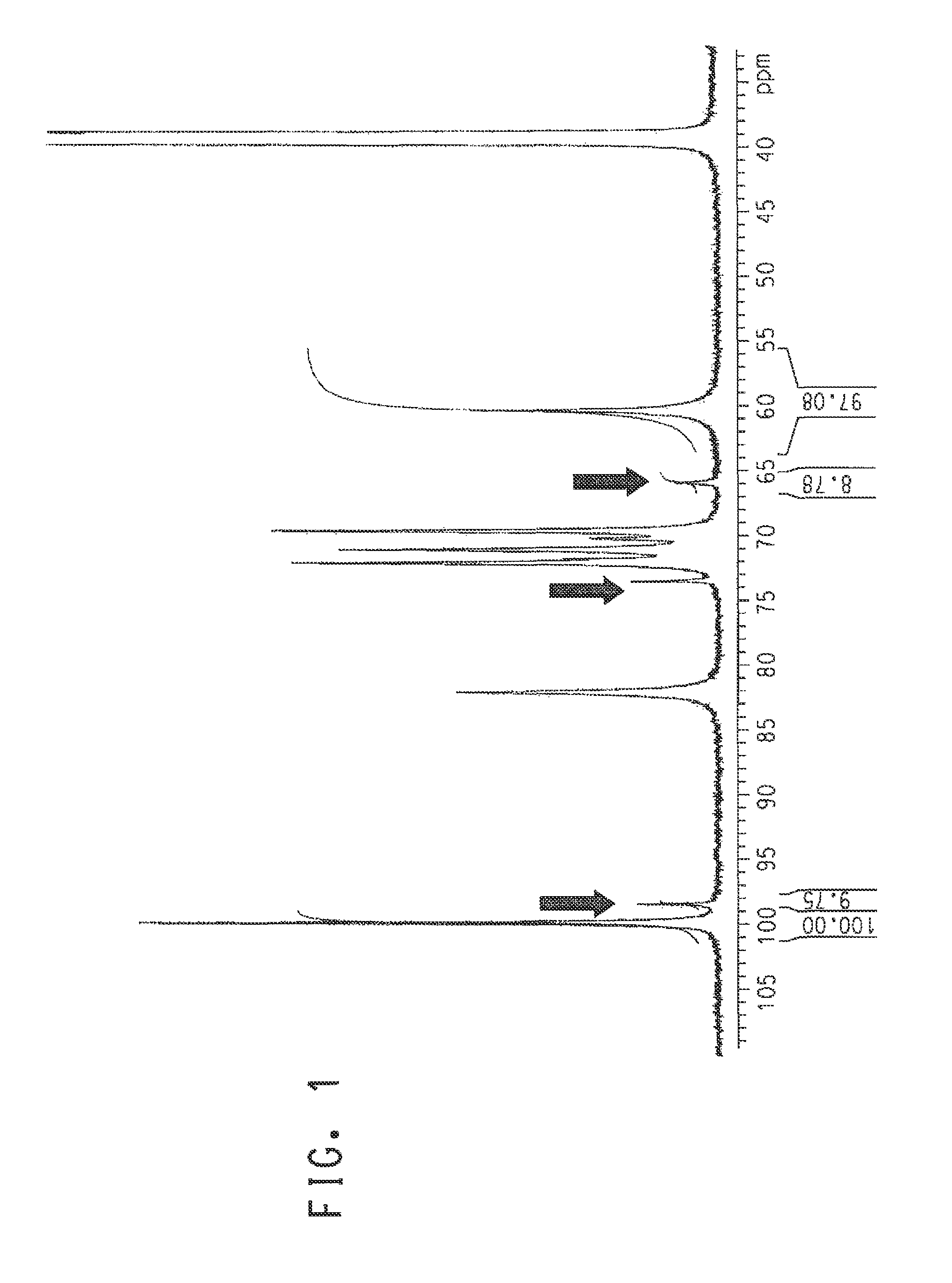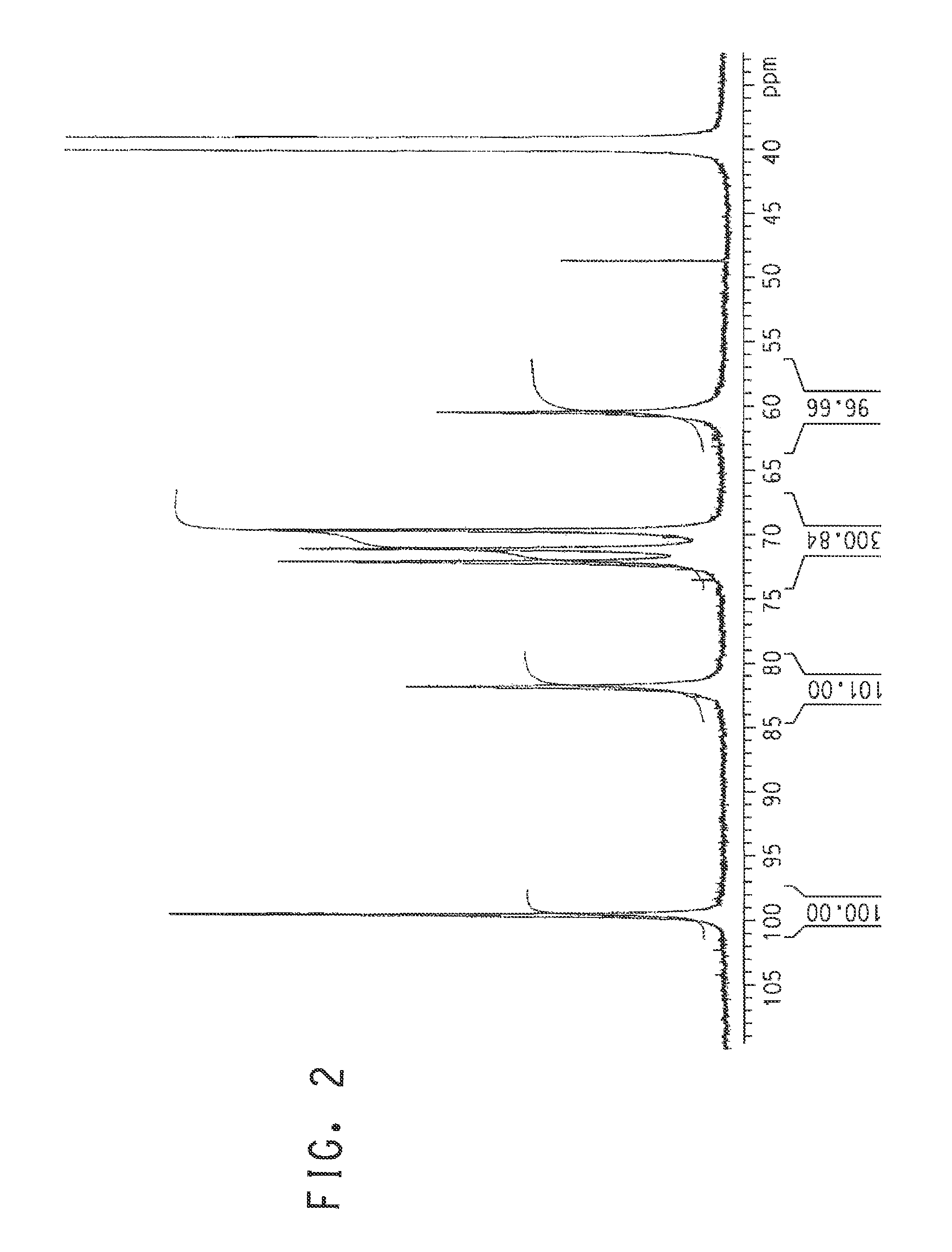High titer production of highly linear poly (alpha 1,3 glucan)
a polymer and high-titer technology, applied in the production of transferases, peptide/protein ingredients, lactose, etc., can solve the problems of compromising the characteristics of the polymer during fiber spinning and end use applications, and achieve the effect of superior mechanical properties and more amenable to fiber preparation
- Summary
- Abstract
- Description
- Claims
- Application Information
AI Technical Summary
Benefits of technology
Problems solved by technology
Method used
Image
Examples
example 1
Construction of Glucosyltransferasxe (qtfJ) Enzyme Expression Strain
[0051]A gene encoding the mature glucosyltransferase enzyme (gtfJ; EC 2.4.1.5; GENBANK® AAA26896.1, SEQ ID NO: 3) from Streptococcus salivarius (ATCC 25975) was synthesized using codons optimized for expression in E. coli (DNA 2.0, Menlo Park Calif.). The nucleic acid product (SEQ ID NO: 1) was subcloned into pJexpress404® (DNA 2.0, Menlo Park Calif.) to generate the plasmid identified as pMP52 (SEQ ID NO: 2). The plasmid pMP52 was used to transform E. coli MG1655 (ATCC 47076™) to generate the strain identified as MG1655 / pMP52. All procedures used for construction of the glucosyltransferase enzyme expression strain are well known in the art and can be performed by individuals skilled in the relevant art without undue experimentation.
example 2
Production of Recombinant gtfJ in Fermentation
[0052]Production of the recombinant gtfJ enzyme in a fermenter was initiated by preparing a pre-seed culture of the E. coli strain MG1655 / pMP52, expressing the gtfJ enzyme, constructed as described in Example 1. A 10 mL aliquot of the seed medium was added into a 125 mL disposable baffled flask and was inoculated with a 1.0 mL culture of E. coli MG1655 / pMP52 in 20% glycerol. This culture was allowed to grow at 37° C. while shaking at 300 revolutions per minute (rpm) for 3 hours.
[0053]A seed culture, for starting the fermenter, was prepared by charging a 2 L shake flask with 0.5 L of the seed medium. 1.0 mL of the pre-seed culture was aseptically transferred into 0.5 L seed medium in the flask and cultivated at 37° C. and 300 rpm for 5 hours. The seed culture was transferred at OD550 nm>2 to a 14 L fermenter (Braun, Perth Amboy, N.J.) containing 8 L of the fermenter medium described above at 37° C.
[0054]Cells of E. coli MG1655 / pMP52 were ...
example 3
Preparation of gtfJ Crude Enzyme Extract from Cell Paste
[0055]The cell paste obtained above was suspended at 150 g / L in 50 mM potassium phosphate buffer pH 7.2 to prepare a slurry. The slurry was homogenized at 12,000 psi (Rannie-type machine, APV-1000 or APV 16.56) and the homogenate chilled to 4° C. With moderately vigorous stirring, 50 g of a floc solution (Aldrich no. 409138, 5% in 50 mM sodium phosphate buffer pH 7.0) was added per liter of cell homogenate. Agitation was reduced to light stirring for 15 minutes. The cell homogenate was then clarified by centrifugation at 4500 rpm for 3 hours at 5-10° C. Supernatant, containing crude gtfJ enzyme extract, was concentrated (approximately 5×) with a 30 kDa cut-off membrane. The concentration of protein in the gftJ enzyme solution was determined by the BCA protein assay (Sigma Aldrich) to be 4-8 g / L.
PUM
| Property | Measurement | Unit |
|---|---|---|
| concentration | aaaaa | aaaaa |
| molecular weight | aaaaa | aaaaa |
| temperatures | aaaaa | aaaaa |
Abstract
Description
Claims
Application Information
 Login to View More
Login to View More - R&D
- Intellectual Property
- Life Sciences
- Materials
- Tech Scout
- Unparalleled Data Quality
- Higher Quality Content
- 60% Fewer Hallucinations
Browse by: Latest US Patents, China's latest patents, Technical Efficacy Thesaurus, Application Domain, Technology Topic, Popular Technical Reports.
© 2025 PatSnap. All rights reserved.Legal|Privacy policy|Modern Slavery Act Transparency Statement|Sitemap|About US| Contact US: help@patsnap.com


